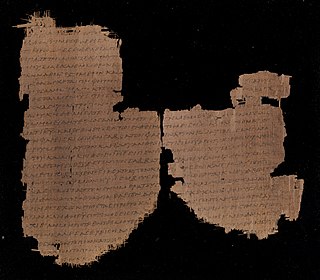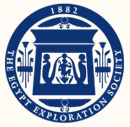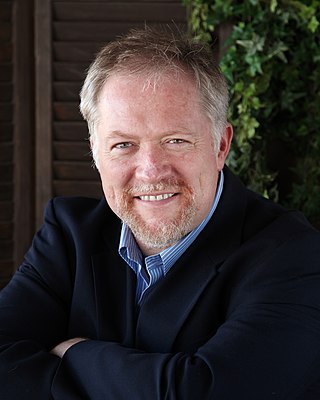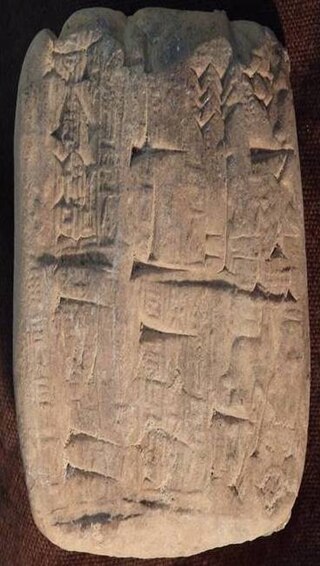
The Bible is a collection of religious texts and scriptures that are held to be sacred in Christianity, and partly in Judaism, Samaritanism, Islam, the Baháʼí Faith, and other Abrahamic religions. The Bible is an anthology originally written in Hebrew, Aramaic, and Koine Greek. The texts include instructions, stories, poetry, prophecies, and other genres. The collection of materials that are accepted as part of the Bible by a particular religious tradition or community is called a biblical canon. Believers in the Bible generally consider it to be a product of divine inspiration, but the way they understand what that means and interpret the text varies.

The Gospel of Luke is the third of the New Testament's four canonical Gospels. It tells of the origins, birth, ministry, death, resurrection, and ascension of Jesus. Together with the Acts of the Apostles, it makes up a two-volume work which scholars call Luke–Acts, accounting for 27.5% of the New Testament. The combined work divides the history of first-century Christianity into three stages, with the gospel making up the first two of these – the life of Jesus the messiah (Christ) from his birth to the beginning of his mission in the meeting with John the Baptist, followed by his ministry with events such as the Sermon on the Plain and its Beatitudes, and his Passion, death, and resurrection.

The Dead Sea Scrolls, also called the Qumran Caves Scrolls, are a set of ancient Jewish manuscripts from the Second Temple period. They were discovered over a period of 10 years, between 1946 and 1956, at the Qumran Caves near Ein Feshkha in the West Bank, on the northern shore of the Dead Sea. Dating from the 3rd century BCE to the 1st century CE, the Dead Sea Scrolls include the oldest surviving manuscripts of entire books later included in the biblical canons, including deuterocanonical manuscripts from late Second Temple Judaism and extrabiblical books. At the same time, they cast new light on the emergence of Christianity and of Rabbinic Judaism. Almost all of the 15,000 scrolls and scroll fragments are held in the Shrine of the Book at the Israel Museum located in Jerusalem. The Israeli government's custody of the Dead Sea Scrolls is disputed by Jordan and the Palestinian Authority on territorial, legal, and humanitarian grounds—they were mostly discovered following the Jordanian annexation of the West Bank and were acquired by Israel after Jordan lost the 1967 Arab–Israeli War—whilst Israel's claims are primarily based on historical and religious grounds, given their significance in Jewish history and in the heritage of Judaism.

The Egypt Exploration Society (EES) is a British non-profit organization. The society was founded in 1882 by Amelia Edwards and Reginald Stuart Poole in order to examine and excavate in the areas of Egypt and Sudan. The intent was to study and analyze the results of the excavations and publish the information for the scholarly world.

The National Museum of American History: Kenneth E. Behring Center is a historical museum in Washington, D.C. It collects, preserves, and displays the heritage of the United States in the areas of social, political, cultural, scientific, and military history. Among the items on display is the original Star-Spangled Banner. The museum is part of the Smithsonian Institution and located on the National Mall at 14th Street and Constitution Avenue NW in Washington, D.C.

Hobby Lobby Stores, Inc., formerly Hobby Lobby Creative Centers, is an American retail company. It owns a chain of arts and crafts stores with a volume of over $5 billion in 2018. The chain has 1,001 stores in 48 U.S. states. The Green family founded Hobby Lobby to express their evangelical Protestant beliefs and the chain incorporates American conservative values and Christian media.
Modern pseudepigrapha, or modern apocrypha, refer to pseudepigrapha of recent origin – any book written in the style of the books of the Bible or other religious scriptures, and claiming to be of similar age, but written in a much later (modern) period. They differ from apocrypha, which are books from or shortly after the scriptural period but not accepted into the religion's canon. Exposing modern pseudepigrapha is part of the fields of palaeography and papyrology, amongst others.
David Green is an American businessman and the founder of Hobby Lobby, a chain of arts and crafts stores. He is a major financial supporter of Evangelical organizations in the United States and funded the Museum of the Bible in Washington, D.C.
The Center for the Study of New Testament Manuscripts (CSNTM) is a 501(c)(3) non-profit organization whose mission is to digitally preserve Greek New Testament manuscripts. Toward that end, CSNTM takes digital photographs of manuscripts at institutions, libraries, museums, monasteries, universities, and archives around the world. The images produced are freely accessible on the Center's website—a searchable library of Greek New Testament manuscripts. With more than 50,000 users examining manuscripts in their digital library each year, the Center's digitization work facilitates a partnership between manuscript owners, archivists, and researchers around the world.
The Yeshiva University Center for Israel Studies reflects the longstanding relationship between Yeshiva University and Israel. It supports research, conferences, publications, museum exhibitions, public programs and educational opportunities that enhance awareness and study of Israel in all of its complexities. The center is led by Director Steven Fine, Professor of Jewish History at Yeshiva University, and Associate Director Joshua Karlip, Professor of Jewish History at Yeshiva University.

Papyrus 39, signed by 𝔓39, is an early copy of the New Testament in Greek. It is a papyrus manuscript of the Gospel of John, it contains only John 8:14-22. The manuscript paleographically had been assigned to the 3rd century. Written by professional scribe, in 25 lines per page, in large, beautiful letters. It has numbered pages.
Jerry A. Pattengale is a faculty member and administrator at Indiana Wesleyan University. He coined and founded the approach of “purpose-guided education” in 1997 while leading the implementation of student success programs at Indiana Wesleyan University. His approach includes calling for a humanities approach to student success, and the need for faculty involvement in the development of strategies.
Larry Weir Hurtado, was an American New Testament scholar, historian of early Christianity, and Emeritus Professor of New Testament Language, Literature, and Theology at the University of Edinburgh (1996–2011). He was the head of the School of Divinity from 2007 to 2010, and was until August 2011 Director of the Centre for the Study of Christian Origins at the University of Edinburgh.
Dirk D. Obbink is an American papyrologist and classicist. He was Lecturer in Papyrology and Greek Literature in the Faculty of Classics at Oxford University until 6 February 2021, and was the head of the Oxyrhynchus Papyri Project until August 2016. Obbink was also a fellow and tutor in Greek at Christ Church Oxford, from which role he was suspended in October 2019, as a result of allegations that he had stolen some of the Oxyrhynchus papyri and sold them to the Museum of the Bible.

The Museum of the Bible is a museum in Washington, D.C., United States, owned by Museum of the Bible, Inc., a non-profit organization established in 2010 by the Green family. The museum documents the narrative, history, and impact of the Bible. It opened on November 17, 2017, and has 1,150 items in its permanent collection and 2,000 items on loan from other institutions and collections.
Candida R. Moss is an English public intellectual, journalist, New Testament scholar and historian of Christianity, and as of 2017, the Edward Cadbury Professor of Theology in the Department of Theology and Religion at the University of Birmingham. A graduate of Oxford and Yale universities, Moss specialises in the study of the New Testament, with a focus on the subject of martyrdom in early Christianity, as well as other topics from the New Testament and early Church History. She is the winner of a number of awards for her research and writing and is a member of the American Academy of Arts and Sciences.

David Johannes Trobisch is a German scholar whose work has focused on formation of the Christian Bible, ancient New Testament manuscripts and the epistles of Paul.

Uncial 0220, also known as the Wyman fragment, is a leaf of a third-century Greek codex containing the Epistle to the Romans.

The Hobby Lobby smuggling scandal started in 2009 when representatives of the Hobby Lobby chain of craft stores received a large number of clay bullae and tablets originating in the ancient Near East. The artifacts were intended for the Museum of the Bible, funded by the Evangelical Christian Green family, which owns the Hobby Lobby chain. Internal staff had warned superiors that the items had dubious provenance and were potentially looted from Iraq.

Papyrus 137 is a late 2nd or earlie 3rd century fragment of the first chapter of the Gospel of Mark The fragment is from a codex and has been published in the Oxyrhynchus papyrus series as P.Oxy. LXXXIII 5345.














